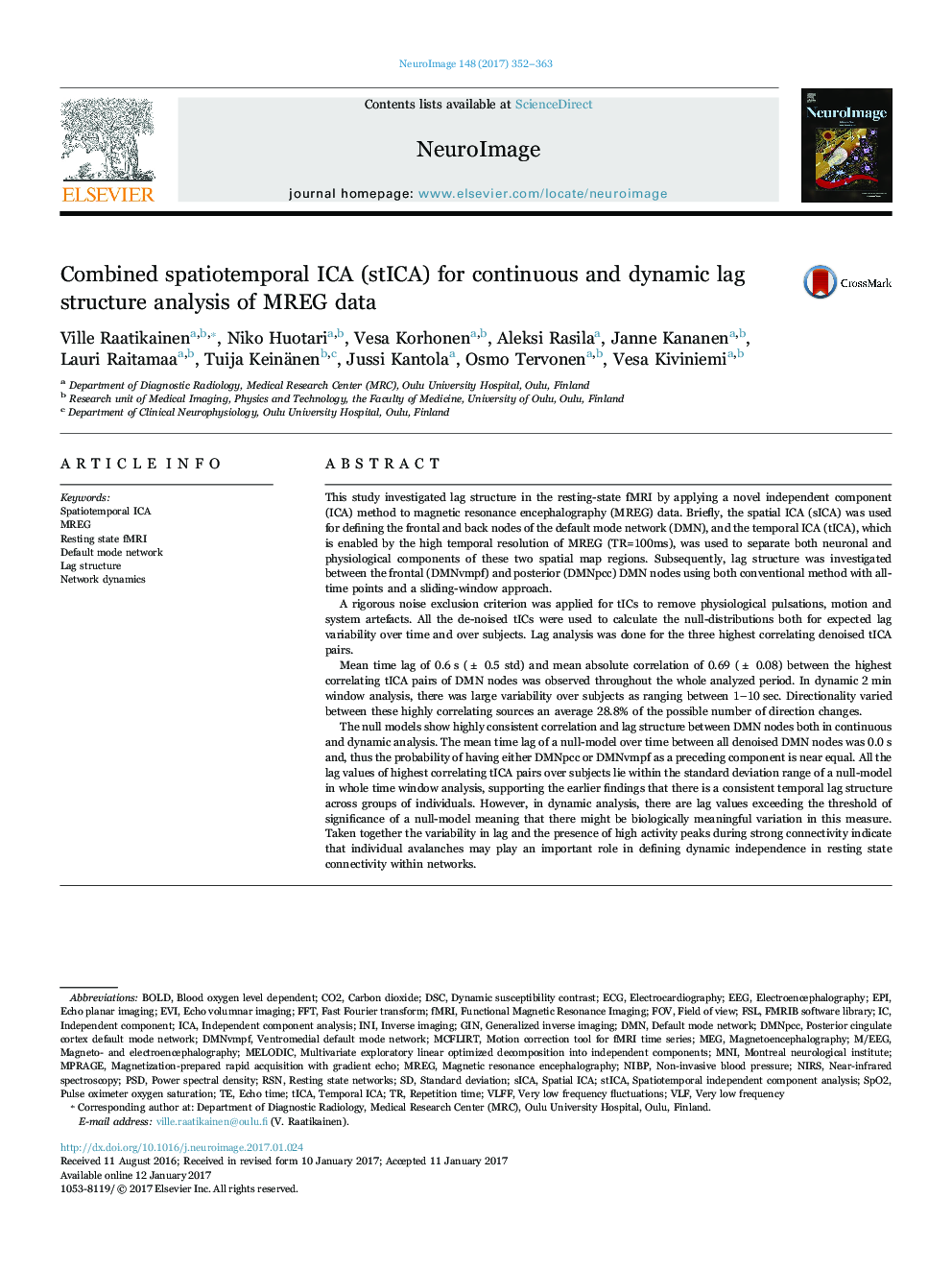| کد مقاله | کد نشریه | سال انتشار | مقاله انگلیسی | نسخه تمام متن |
|---|---|---|---|---|
| 5631305 | 1580862 | 2017 | 12 صفحه PDF | دانلود رایگان |

This study investigated lag structure in the resting-state fMRI by applying a novel independent component (ICA) method to magnetic resonance encephalography (MREG) data. Briefly, the spatial ICA (sICA) was used for defining the frontal and back nodes of the default mode network (DMN), and the temporal ICA (tICA), which is enabled by the high temporal resolution of MREG (TR=100ms), was used to separate both neuronal and physiological components of these two spatial map regions. Subsequently, lag structure was investigated between the frontal (DMNvmpf) and posterior (DMNpcc) DMN nodes using both conventional method with all-time points and a sliding-window approach.A rigorous noise exclusion criterion was applied for tICs to remove physiological pulsations, motion and system artefacts. All the de-noised tICs were used to calculate the null-distributions both for expected lag variability over time and over subjects. Lag analysis was done for the three highest correlating denoised tICA pairs.Mean time lag of 0.6 s (± 0.5 std) and mean absolute correlation of 0.69 (± 0.08) between the highest correlating tICA pairs of DMN nodes was observed throughout the whole analyzed period. In dynamic 2 min window analysis, there was large variability over subjects as ranging between 1-10 sec. Directionality varied between these highly correlating sources an average 28.8% of the possible number of direction changes.The null models show highly consistent correlation and lag structure between DMN nodes both in continuous and dynamic analysis. The mean time lag of a null-model over time between all denoised DMN nodes was 0.0 s and, thus the probability of having either DMNpcc or DMNvmpf as a preceding component is near equal. All the lag values of highest correlating tICA pairs over subjects lie within the standard deviation range of a null-model in whole time window analysis, supporting the earlier findings that there is a consistent temporal lag structure across groups of individuals. However, in dynamic analysis, there are lag values exceeding the threshold of significance of a null-model meaning that there might be biologically meaningful variation in this measure. Taken together the variability in lag and the presence of high activity peaks during strong connectivity indicate that individual avalanches may play an important role in defining dynamic independence in resting state connectivity within networks.
Journal: NeuroImage - Volume 148, 1 March 2017, Pages 352-363